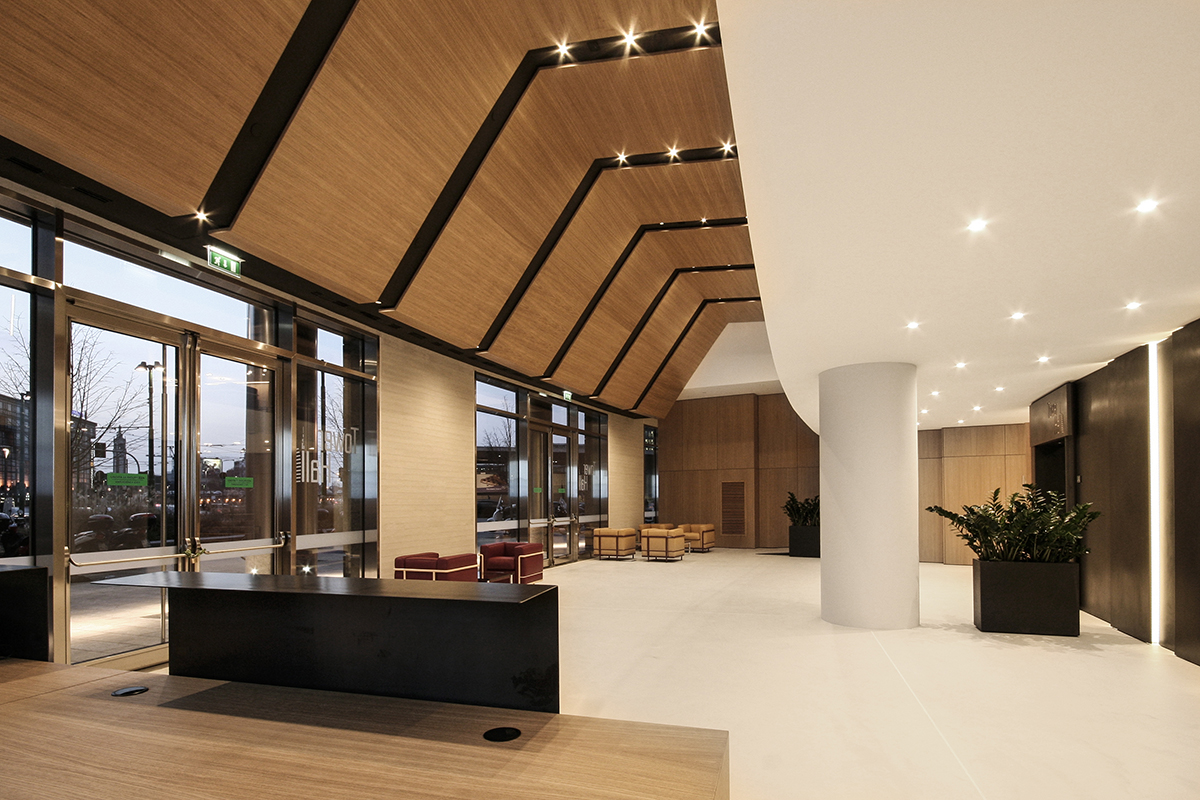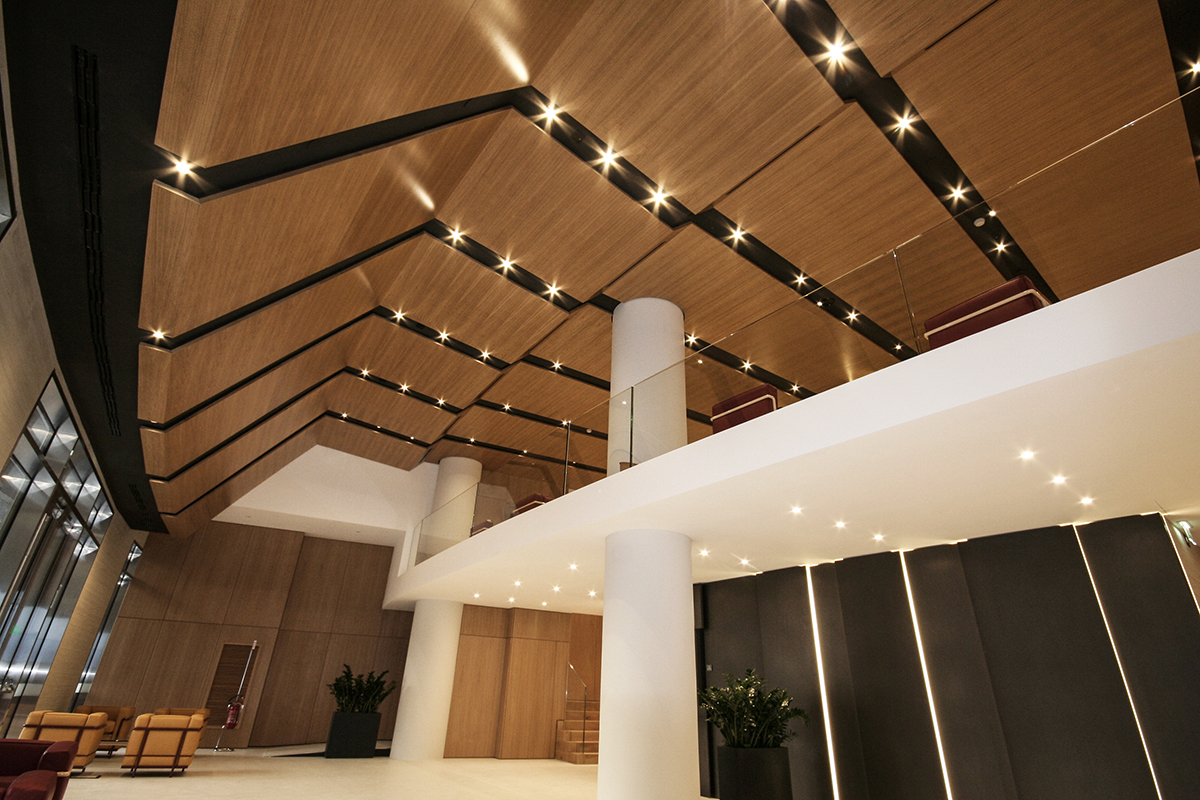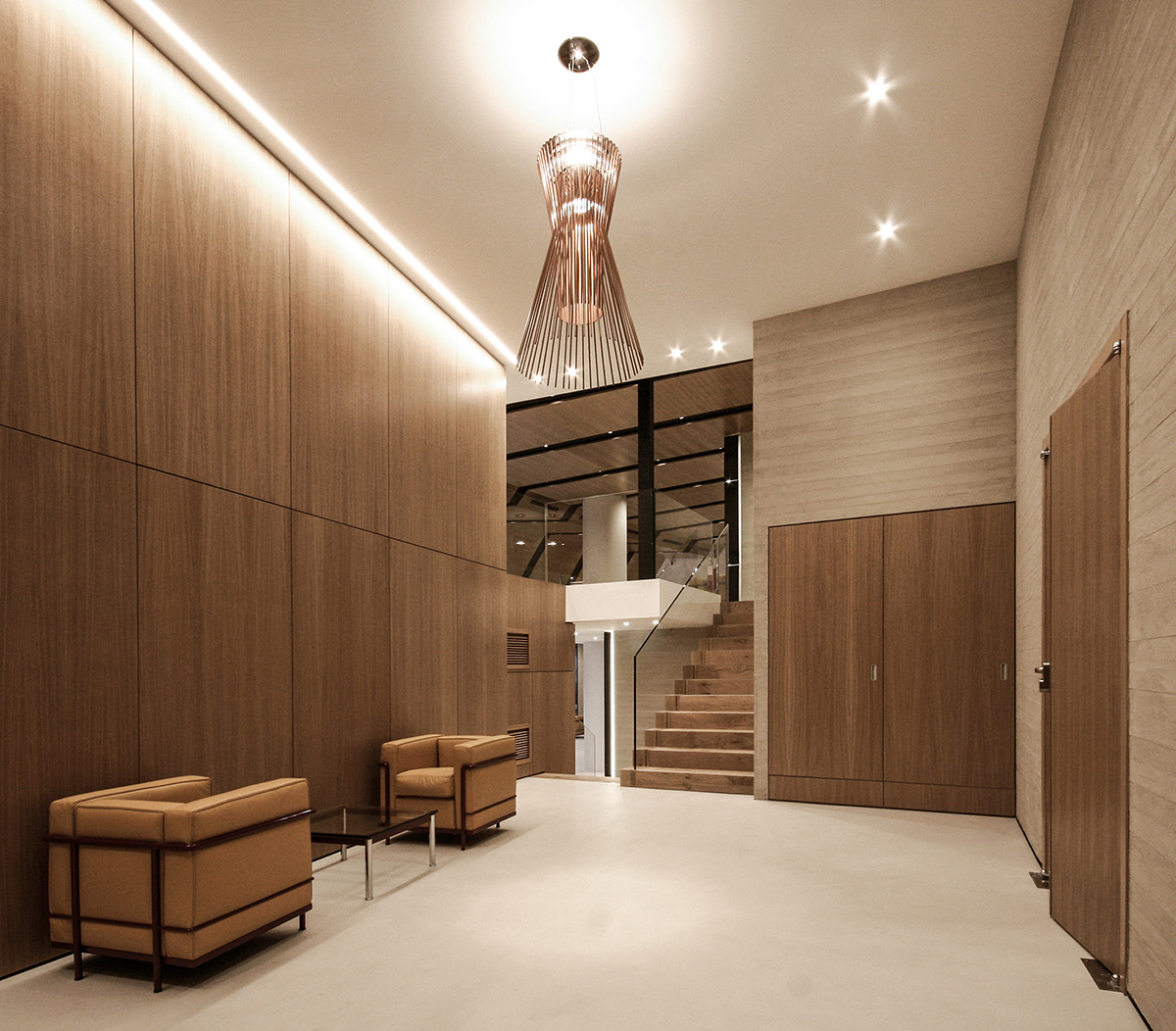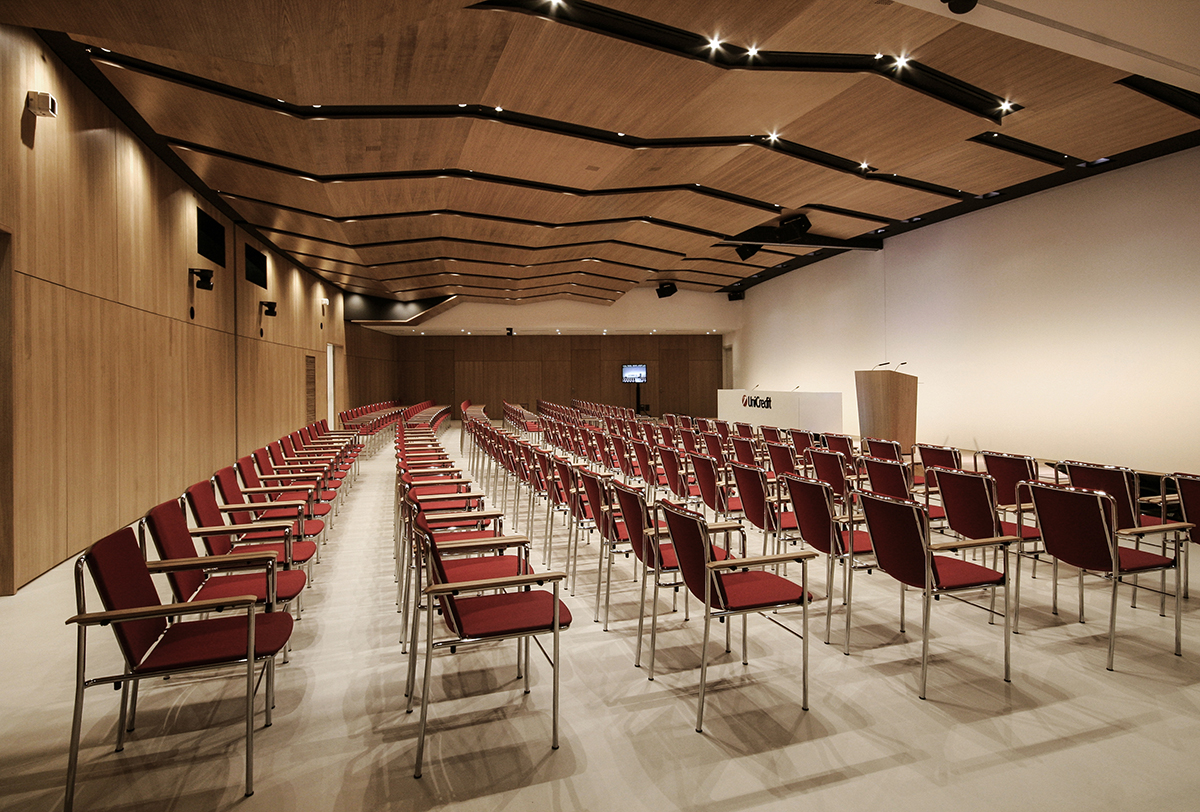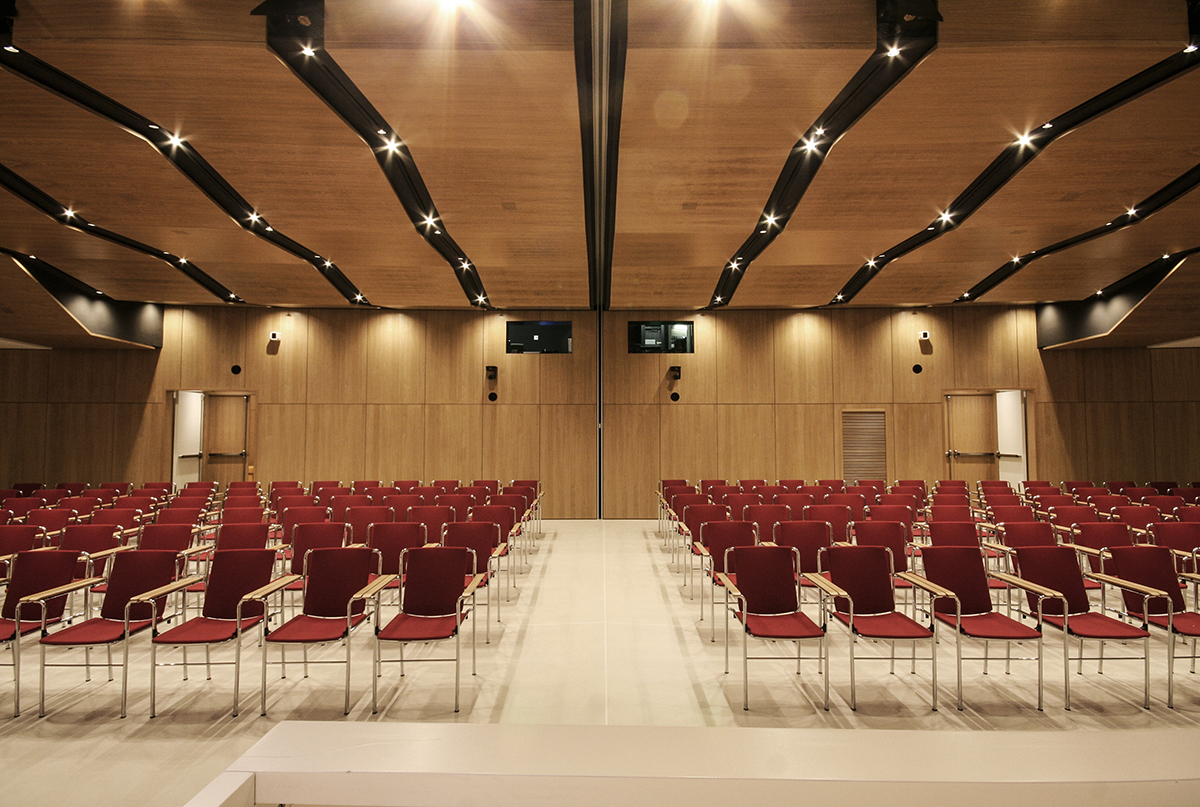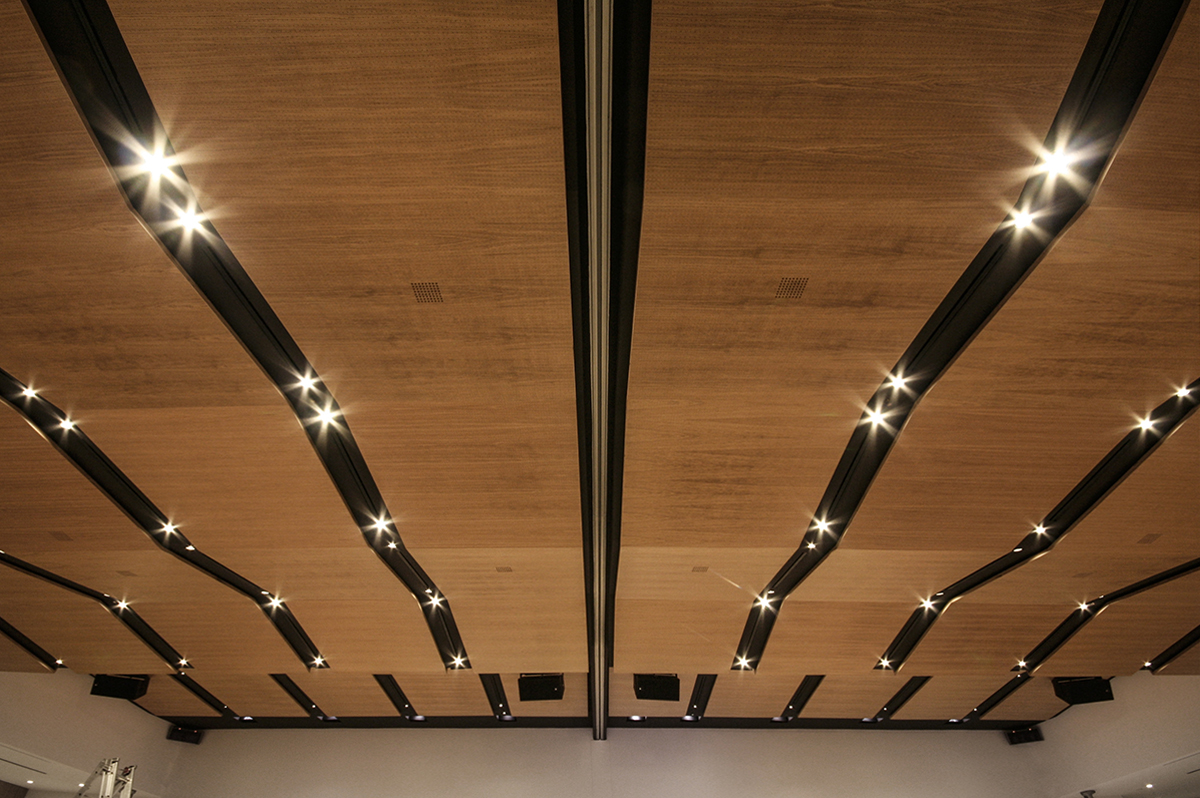TOWER HALL
Torre Unicredit, Milano
Gli strumenti di un architetto si sa, sono carta e grafite utilizzati insieme per creare un disegno, anteprima di ciò che si vuole realizzare. A volte però l’immaginazione può portare a vedere uno di questi strumenti come una entità singola, come accade per l’ORIGAMI*, proiezione della realtà formato da sola carta.
Come onde sonore che si propagano nell’ambiente, il controsoffitto della sala multipurpose si muove al pari di un foglio di carta piegato ed in continuo movimento, mimando un maxi origami*. Un’onda continua in grado di accogliere il visitatore partendo dal foyer e arrivando fino alla sala principale, movimento che offre una forte caratterizzazione agli ambienti interni ed una particolare vista prospettica, guidando l’osservatore fino al limite del palco.
In contrapposizione allo skyline curvo ed armonioso degli esterni, gli spazi interni sono ricchi di linee tese e geometrie spezzate, dove l’attento studio dell’illuminazione interna consente di creare particolari effetti e scenari luminosi, che disegnano tagli continui nel controsoffitto e nel rivestimento in boiserie di rovere delle pareti perimetrali. I centosessanta spettatori che animeranno la sala, saranno immersi in un ambiente pensato come una cassa armonica, dove suoni sono calibrati alla perfezione per “rimbalzare” sulle superfici inclinate del soffitto.
*con il termine ORÌGAMI si intende l’arte di piegare la carta (O-RI-GAMI termine derivato dal giapponese, ORI piegare & KAMI carta).
Unicredit Tower, Milano
The tools of an architect are universally recognised, they are graphite and paper used together to create a design, a preview of what you want to accomplish. Sometimes though, one’s imagination may lead one to perceive one of those tools as a single entity, as in the case of the ORIGAMI*, projection of reality formed by a single sheet of paper. Just like sound waves spreading through the environment, the ceiling of the multipurpose hall moves like a folded sheet of paper in continuous motion, mimicking a giant example of origami*. A continuous wave, able to accommodate the visitor starting from the foyer and as far as the main hall, a movement that strongly characterises the interior and creates an unusual perspective, leading the visitor to the edge of the stage.
In contrast to the curved skyline and harmonious exterior, the interior is filled with taut lines and broken geometric shapes, the carefully-studied lighting creates special effects and lighting scenarios, which make running cuts in the ceiling and in the oak panelling on the perimeter walls. The one hundred and sixty spectators who will animate the space, will be immersed in an environment designed as a sounding board, where sounds are calibrated to perfection to “bounce” off the sloping surfaces of the ceiling.
* The term refers to the art of ORIGAMI paper folding (折り紙 o- re- gami , a term derived from the japanese, ‘ori’ folding and ‘kami’ paper).

